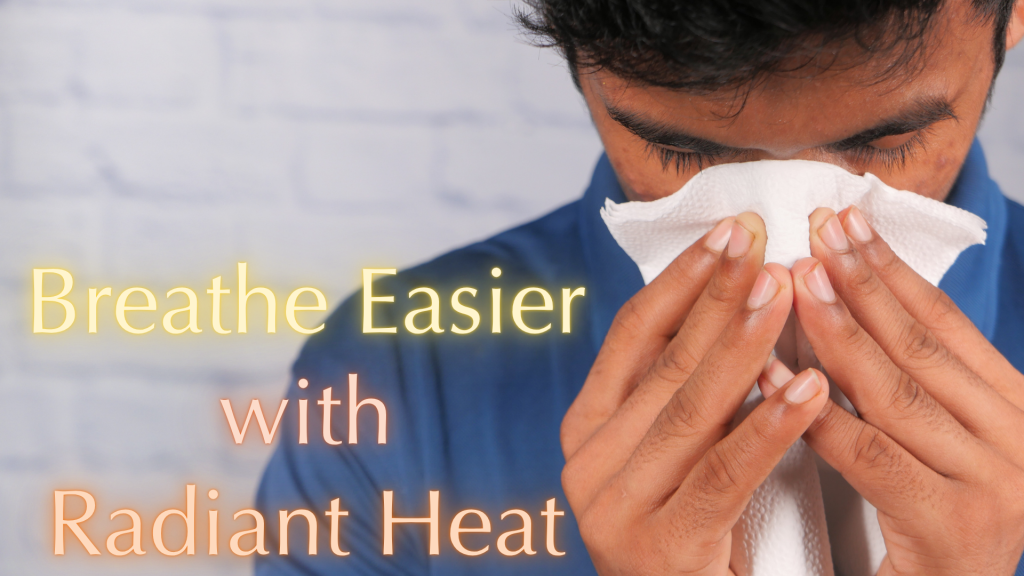
Infrared Radiant Heat – The Best Heat for Allergies & Air Quality
Both infrared radiant heat and forced-air heating have their benefits, but when air quality and allergy concerns are a priority, radiant heat stands out. Because it warms surfaces instead of circulating air, radiant heating helps reduce the spread of dust, allergens, and other airborne irritants. This is one of the key reasons radiant heat is best for better air quality—it delivers warmth without moving air, keeping your environment cleaner and more comfortable.
Let’s dive into why radiant heat is best for better air quality and overall comfort:
Efficiency and Comfort
Radiant Heat: Radiant heating systems work by directly warming the surfaces in a room. Because they don’t rely on blowing air, there’s no need for ductwork. This means less energy loss and a “win” for radiant heating efficiency. Infrared radiant heat provides consistent warmth throughout the space without creating drafts or temperature fluctuations.
Forced Air: Forced air systems, on the other hand, blow heated air either directly into the space or through ducts. Unfortunately, this method can lead to uneven heating. You’ve probably experienced this: the area right near the heater or vent feels too warm, while other parts of the room remain chilly. Plus, hot air tends to rise, leaving the lower parts of the room cooler. When it comes to forced air vs. radiant heat, especially for people concerned about breathing comfort, radiant heat is best for better air quality every time.

Allergen Distribution / Air Quality
Infrared Radiant Heat: Infrared radiant heaters don’t rely on air movement, which means they don’t distribute allergens like dust, pollen, or pet dander. If you suffer from allergies, radiant heat is a friendlier option—and once again, radiant heat is best for better air quality in any home or facility.
Forced Air: Forced air systems can cause poor air quality and exacerbate allergies because they blow air around, stirring up particles and spreading them throughout the space.
Noise and Maintenance
Infrared Radiant Heat: Radiant heating systems operate almost silently. Plus, there are fewer components to maintain. Once installed, they require minimal upkeep.
Forced Air: Forced air systems can be noisy during operation, especially when the blower fan kicks in. Additionally, filters may need regular replacement, and if the system has ducts, they can accumulate dust and debris over time.
In summary, infrared radiant heat offers a more comfortable experience, better energy efficiency (at least 25% more efficient than forced air), and improved air quality. For anyone sensitive to dust or allergens, it’s clear that radiant heat is best for better air quality and overall indoor comfort. So, if you’re looking for cozy warmth without compromising on cleanliness, infrared radiant heat is a fantastic choice! 😊🔥
Give us a call, email, or fill out our Project Details form so we can start working on a radiant heat solution for your project!
Phone: (888) 501-0252
Email: sales@glradiant.com
Website: www.GLRadiant.com
Also feel free to check out Detroit Radiant Products for more information on our product!
